It is also an established custom among the natives to clothe every male child when only three years old with a kumberbund, at the age of seven they assume the Kuttee and at twelve carry a matchlock.1George Augustus Addison, Indian Reminiscences, Or, The Bengal Moofussul Miscellany (Edward Bull, 1837), 116.
The above-mentioned is what the European who visited Kodagu(Coorg) at the start of the 19th century, more than 200 years back, noted in his journal on 2nd February 1801, three decades before the British annexed Coorg.
I recall something similar was narrated by the Late Poopanda Sheethamma. According to her narration – the rite of passage was a bit different than what that European recorded.
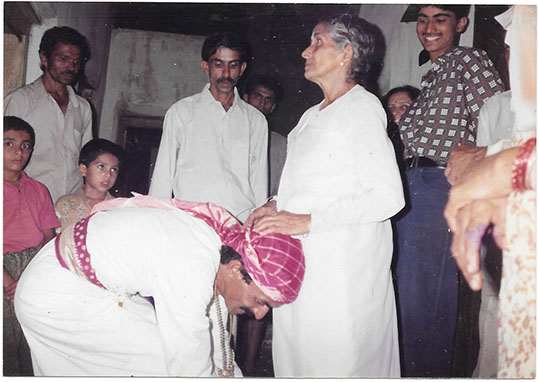
Regarding the age-old custom, she told me:
On attaining 4 years of age, the Kodava (Coorg)2Though the Kodava community have addressed themselves as “Kodava”, historical records written in Kannada show that they were addressed as “Kodaga” or “Kodagaru”, by the Kannada speaking people. (See: Benjamin Lewis Rice, Mysore: A gazetteer compiled for Government. v.1, 1837-1927 (Mangalore: Mysore Government Press, 1858), 296; Daniel Sanderson (rev, corr. and enl.), A dictionary, Canarese and English (Mangalore: Basel Mission Book, 1858), 329.
In fact the Odikathi in Kannada was known as “Kodaga-Katti”. (See: – Benjamin Lewis Rice, Mysore: A gazetteer compiled for Government. v.1, 1837-1927 (Mangalore: Mysore Government Press, 1858), 296.
But some Kodavas are not so pleased at being addressed as “Kodaga” because a slightly-differently pronounced variant “Kódåga” in Hale(Old) Kannada means – a monkey or ape; A stupid man or a fool. (See Daniel Sanderson (rev, corr. and enl.), A dictionary, Canarese and English (Mangalore: Basel Mission Book, 1858), 335.
The British called them Coorg (singular) or Coorgs (plural). Also, many other Colonial records mention them as Koorg, Koorgs, Coorga, Coorgas, Coorgite, Coorgites. French records mention them as Corgue or Corgues. German records mention them as Kurg or Kurgs. ”Coorgi” is a hindi appellation. was accorded the Kuppya and Chele (the traditional garb of the Kodava). Kuppya is a long coat. Chele (cummerbund) is a sash used like a belt. On attaining the age of 10 the child would be presented with a smaller Peechekathi & Chele (the small dagger cum knife that is tucked into the Chele). At the age of 15, a gun was presented with a smaller Odikathi (the curved sword, which works more like a hatchet and chopper and cuts wood well) and the Kodava had now come of age and he was expected to learn to use the weapons effectively, defend himself, get firewood, learn to hunt and forage the forests of his ancestors and was expected to assist with bringing food to the table.
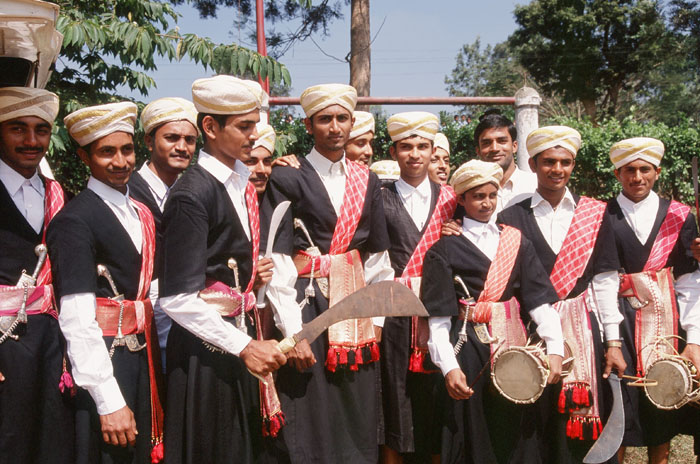
Whatever the exact age and the puja and rituals involved in the rite of passage are immaterial. What is important is that the custom existed long before the British annexed Coorg.
That is why guns and their traditional arms are still sacrosanct for the Kodava and a few other communities who emigrated to Coorg after the fall of Srirangapatna (some communities were invited by the Rajas to occupy the cultivable land of Kodavas who had perished or were displaced3Col. William Kirkpatrick, Tippoo Sultan, Fateh Ali, Nawab of Mysore, 1753-1799 (London: Black, Parry & Kingsbury, 1811), 236. Select letters of Tippoo Sultan to various public functionaries. Arranged and translated by Col. William Kirkpatrick with notes and observations, and an appendix, containing several original documents never before published. Letter CCII, To Meer Moaainudeen, dated 13th & 16th January 1786. In the letter to Moaainudeen, Tipu Sultan claims to have taken captive 50,000 Kodava men and women to Srirangapatna. in the wars with Hyder Ali and Tipu Sultan4From Hyder Ali’s invasion of Coorg (Kodagu) in 1774, till the death of Tipu Sultan in 1799, the struggle of Kodavas with the Sultans of Mysore lasted for 25 years. The legacy was paid by the Kodavas with their numbers., others were offered new lands to settle)5Suryanath Kamat, Karantaka State Gazetteer (Kodagu District) (Government Press, 1993), 144.6A, J. Curgenven, The Hukumnama of Lingarajendra Wodeyar, Raja of Coorg (Mercara: Coorg District Press, 1911), 35. and have Jamma(Jumma)7The Jamma Land had lesser tax rate and was non-alienable. land tenure . Some of these Jamma communities started following the customs and traditions of the Kodavas to a certain degree.8Suryanath Kamat, Karantaka State Gazeetter (Kodagu District) (Government Press, 1993), 149-155.
Even when the Kodavas went to meet their King, they were armed. The same European who was witness to the event notes in his journal:
Passing by several villages, I observed on the Rajah’s approach that the men and women who belonged to them came out. The men who carried arms drew up in one rank to pay their homage and make their salam (salute) while the women, each with a lighted cheragh (lamp) in her hand, stood in a modest respectful attitude on one side of the road.
This evening a number of Coorgas armed with a kuttee – a kind of hatchet – and matchlock came and paid their respects to the Maharaj.9George Augustus Addison, Indian Reminiscences, Or, The Bengal Moofussul Miscellany (Edward Bull, (1837), 72.
The Kodavas kept on with their tradition of carrying guns because the Kodavas demanded from the British government that “their civil and religious usages” not be meddled with.
The Government moreover is under a pledge to respect all the civil and religious usages of the Coorgas and has always guarded against the adoption of any measures which might appear to threaten the destruction of their nationality.10Lewis Rice, Mysore and Coorg, A Gazetteer complied for the Government of India, Vol. III (Bangalore: Mysore Government Press, 1878), 350.
The British attempt to take over Coorg by physical conquest, met one of the stiffest and brutal resistances in the history of India, according to the British themselves.
The Annexation of Coorg did not come easy for the British. When the British invaded Coorg, they were in for a rude shock and a pleasant surprise.
- Did the British or the Indian State show any kind of largesse when they exempted Kodavas(Coorgs) from the Disarming Act 1834 and later when the Government of India continued with the same?
- Did they provide this exemption because the Kodavas curried favour with the British?
- Or was it part of the culture and religious traditions that the state had to respect and not transgress?
The answer lies in the historical records:
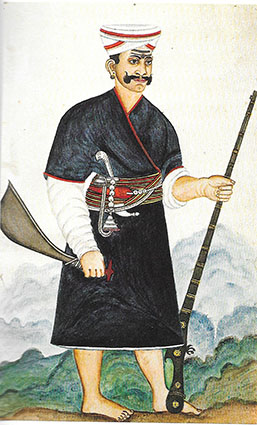
Coorg was one of the last bastions to be conquered by the East India Company. They invaded Coorg through five different routes: Malabar (present day Kerala) was under their control. To the northeast, Mangalore and Hassan were theirs; to the East, Mysore was under their control. Coorg was therefore boxed up.
Rude Shock:
The cornered Kodavas put up a good fight; a barbaric one. Hyder Ali and Tipu Sultan11According to Tipu Sultan, the Kodavas had rebelled against Hyder Ali at least “seven times” and had massacred his forces. (See: Salim Al-Din Qurashi , Autobiographical Memoirs of Tipu Sultan (London : Qalamdan Books, 2010), 19. He would leave Coorg in 1782, after accusing the Kodavas of “polyandry” and warned them that he would forcibly convert them to Islam and banish them from Coorg if they rebelled again. No sooner, the Kodavas rose up in arms again many more times and it concluded with the fall of Srirangapatna. learned the hard way and lost their thrones. When the British decided it was time to take over Coorg by physical conquest, they nearly met the same fate.
The Kodavas killed and wounded hundreds of British soldiers during the first and last Anglo-Coorg War. Nearly every Kodava was on the battlefield. Only women and children seemed to have been left at home.12The Asiatic Journal & Monthly Register For British & Foreign India, China & Australia, XV (1834), 156.
Lt. Colonel Mill’s gallantry ended with his life. His troops retreated.13The United Service Magazine, Vol 27 (1838), 35. His head was presented to the Raja of Coorg.14The Asiatic Journal & Monthly Register For British & Foreign India, China & Australia, V (1834), 155. A Brigade-Major was shot through his trousers. Ensign Johnstone was cut open and a Kodava drank his blood.15Colburn’s United Service Magazine & Naval & Military Journal, Part II (1858), 398. He had promised the Coorg Raja that he will drink “English officer’s blood”, before he returned. He kept his promise and was rewarded by the Raja for the barbaric act.16The United Service Magazine, 27 (1838), 40.
“They massacre everyone who happens to fall into their hands: in fact, now there will be no further quarter given on either side”, the British officer wrote in his journal.
Instead of getting any quarter, they had to escape with their lives back to where they came from, Mangalore(Canara).17Colburn’s United Service Magazine & Naval & Military Journal, Part II (1858), 400.
Colonel Jackson also couldn’t achieve much and provided an account of his loss and retreat to his superiors.18The Asiatic Journal & Monthly Register For British & Foreign India, China & Australia, XV (1834), 206. He was so mortified by his failure that he himself applied for a court martial inquiry into the cause of his failure.19Lewis Rice, Mysore and Coorg, A Gazetteer complied for the Government of India, Vol. III (Bangalore: Mysore Government Press, 1878), 182.
The roster of all the dead and wounded by the Kodavas are mentioned in military and other journals and in the letters exchanged amongst the British of that era.
Pleasant Surprise:
There was a pleasant surprise in store for the British. The war came to an abrupt end when two of the Principal Dewans (Ministers) of Coorg, Apparanda Bopanna and Cheppudira Ponnappa, decided to jump ship and go to the British side. Bopanna personally went to meet Colonel Fraser with 400 of his fighters and escorted the British troops to Madikeri Palace, the seat of Government. Later under British rule, both became powerful figures in Coorg.20Calcutta Review Vol. XXVI, January-June 1856, 199-192 Ponnappa’s progeny would go on to become the first and last Chief Minister of Coorg State, the late Shri C. M. Poonacha.21C.P.Belliappa, “Call for freedom from a tiny village,” Deccan Herald, 4th August 2015.
Coorg did not come to Britain through conquest. But, once the capital was in British hands, there was not much to do for the other Kodava Chiefs but to sit down to negotiate with the British.
There were two principal conditions put forward: That no cow would be slaughtered in Coorg and their civil and religious usages will be respected.
The Representative of the Governor General now entered negotiations with the remaining Dewans and other principal men, which must have puzzled them not a little, but which they turned to pretty good account after having comprehended their novel position.
They were induced, however to express anxiety for the maintenance of their religion and especially begged of Colonel Fraser to stop the pollution of their country by the killing of cows for use by the European troops. Their petition was at once granted; the butchers were ordered down to Fraserpet (Kushalnagar), a distance of twenty miles from Mercara, and to this day the beef consumed by soldiers and other European residents at that station is carried up from Fraserpet.22Calcutta Review Vol. XXVI, January-June 1856, 199-192.
Proclamation issued by Colonel Fraser after the negotiations:
Whereas it is the unanimous wish of the inhabitants of Coorg to be taken under the protection of the British Government, His Excellency the Right Honorable the Governor General has been pleased to resolve that the territory heretofore governed by Vira Rajendra Vodeya shall be transferred to the Honorable Company. The inhabitants are hereby assured that they shall not again be subjected to native rule and that their civil and religious usages will be respected and that the greatest desire will invariably be shown by the British Government to augment their security, comfort and happiness.23Ibid., 202
The Chief Commissioner of Mysore and Coorg wrote:
The province being one of the very few British possessions in India which has become such, not by conquest, but by the free consent of the population. Perhaps owing to this fact, the Government, to which they announced their adhesion in 1834, has not without good reason, shown them constant indulgence, and an exceptional deference towards their feelings and prejudices. For instance, the slaughter of cattle in Coorg is, and is likely to remain, forbidden, so long as the people deprecate it, nor would it be prudent or just to ignore their feelings on the subject, in the face of a distinct promise given to them by Colonel Fraser at the time of annexation.24Eastern Experiences, Lewin Bentham Bowring, Chief Commissioner of Mysore & Coorg, (London:Henry S King & Co 1871), 247.
Not all British Officials were happy with giving into the demands of Kodavas.
James Wheeler wrote:
The people of Coorg insisted on another condition namely that no cows should be killed in Coorg. Indeed, all Hindus whose feeling have not been blunted by association with Muhammadans or Europeans regard the slaughter of a cow with the same horror that they would the murder of a mother. Some authorities have cavilled at this stipulation as a concession to Hindu prejudices and Sir John Malcolm refused to concede it to Daulat Rao Sindia after the victories of Assaye and Argaum.
But the two cases were altogether different, Sindia was not in a position to demand such a concession and setting aside all other considerations it would have been most impolitic to have admitted it. Moreover the people of Hindustan had been subjected for ages to Muhammadans dominion. On the other hand, the acquisition of Coorg by the English was of the nature of a compact. The concession was restricted to a little secluded territory sixty miles long and forty broad which had never been conquered by the Muhammadans. Above all the stipulation is no breach of morality or decency although it may be inconvenient to Europeans. If the Hindus of Coorg had claimed the right to burn living widows or to display obscene symbols on idols the case would have been different.25James Talboys Wheeler, A short history of India and the frontier states of Afghanistan, Nipal, and Burma (London: Macmillan & co. 1884), 534.
So what do Kodavas do nowadays with their guns ?
They worship the gun with other traditional weapons during Kailpodh (Kailmurtha) festival.
The Huttari (Harvest Festival) is started with a gun shot in the rice fields. Kailpodh is a festival which is celebrated only in the Kodagu District. It is similar to Ayudha Puja. Mostly weapons – Guns, Odikathi & Peechekathi are worshipped during Kailpodh.26Sudarshan Reddy Suryanarayana, Religion and Society in South India. Mohammed A. Kalam, Okka of the Coorgs (Delhi: B.R.Publishing Corporation, 1987) 213. Shooting competitions are a custom during Kailpodh.27G. Richter, Manual of Coorg: A Gazetteer of the Natural Features of the Country, and the Social and Political Condition of its Inhabitants (Kessinger Publishing, 1870), 160.
They also use the gun for the two most important ceremonies of their lives – birth and death. The arrival or a departure of the soul is signaled with gunshot/s.
N. Hemamalini, as a tourist at Coorg, was witness to a Kodava announcing the birth of his sister’s child with a gun shot. She had written about the same in The Hindu in 2012.28N. Hemamalini , “Guns & Roses.” , The Hindu, March 16, 2012.
Footnotes
- 1George Augustus Addison, Indian Reminiscences, Or, The Bengal Moofussul Miscellany (Edward Bull, 1837), 116.
- 2Though the Kodava community have addressed themselves as “Kodava”, historical records written in Kannada show that they were addressed as “Kodaga” or “Kodagaru”, by the Kannada speaking people. (See: Benjamin Lewis Rice, Mysore: A gazetteer compiled for Government. v.1, 1837-1927 (Mangalore: Mysore Government Press, 1858), 296; Daniel Sanderson (rev, corr. and enl.), A dictionary, Canarese and English (Mangalore: Basel Mission Book, 1858), 329.
In fact the Odikathi in Kannada was known as “Kodaga-Katti”. (See: – Benjamin Lewis Rice, Mysore: A gazetteer compiled for Government. v.1, 1837-1927 (Mangalore: Mysore Government Press, 1858), 296.
But some Kodavas are not so pleased at being addressed as “Kodaga” because a slightly-differently pronounced variant “Kódåga” in Hale(Old) Kannada means – a monkey or ape; A stupid man or a fool. (See Daniel Sanderson (rev, corr. and enl.), A dictionary, Canarese and English (Mangalore: Basel Mission Book, 1858), 335.
The British called them Coorg (singular) or Coorgs (plural). Also, many other Colonial records mention them as Koorg, Koorgs, Coorga, Coorgas, Coorgite, Coorgites. French records mention them as Corgue or Corgues. German records mention them as Kurg or Kurgs. ”Coorgi” is a hindi appellation. - 3Col. William Kirkpatrick, Tippoo Sultan, Fateh Ali, Nawab of Mysore, 1753-1799 (London: Black, Parry & Kingsbury, 1811), 236. Select letters of Tippoo Sultan to various public functionaries. Arranged and translated by Col. William Kirkpatrick with notes and observations, and an appendix, containing several original documents never before published. Letter CCII, To Meer Moaainudeen, dated 13th & 16th January 1786. In the letter to Moaainudeen, Tipu Sultan claims to have taken captive 50,000 Kodava men and women to Srirangapatna.
- 4From Hyder Ali’s invasion of Coorg (Kodagu) in 1774, till the death of Tipu Sultan in 1799, the struggle of Kodavas with the Sultans of Mysore lasted for 25 years. The legacy was paid by the Kodavas with their numbers.
- 5Suryanath Kamat, Karantaka State Gazetteer (Kodagu District) (Government Press, 1993), 144.
- 6A, J. Curgenven, The Hukumnama of Lingarajendra Wodeyar, Raja of Coorg (Mercara: Coorg District Press, 1911), 35.
- 7The Jamma Land had lesser tax rate and was non-alienable.
- 8Suryanath Kamat, Karantaka State Gazeetter (Kodagu District) (Government Press, 1993), 149-155.
- 9George Augustus Addison, Indian Reminiscences, Or, The Bengal Moofussul Miscellany (Edward Bull, (1837), 72.
- 10Lewis Rice, Mysore and Coorg, A Gazetteer complied for the Government of India, Vol. III (Bangalore: Mysore Government Press, 1878), 350.
- 11According to Tipu Sultan, the Kodavas had rebelled against Hyder Ali at least “seven times” and had massacred his forces. (See: Salim Al-Din Qurashi , Autobiographical Memoirs of Tipu Sultan (London : Qalamdan Books, 2010), 19. He would leave Coorg in 1782, after accusing the Kodavas of “polyandry” and warned them that he would forcibly convert them to Islam and banish them from Coorg if they rebelled again. No sooner, the Kodavas rose up in arms again many more times and it concluded with the fall of Srirangapatna.
- 12The Asiatic Journal & Monthly Register For British & Foreign India, China & Australia, XV (1834), 156.
- 13The United Service Magazine, Vol 27 (1838), 35.
- 14The Asiatic Journal & Monthly Register For British & Foreign India, China & Australia, V (1834), 155.
- 15Colburn’s United Service Magazine & Naval & Military Journal, Part II (1858), 398.
- 16The United Service Magazine, 27 (1838), 40.
- 17Colburn’s United Service Magazine & Naval & Military Journal, Part II (1858), 400.
- 18The Asiatic Journal & Monthly Register For British & Foreign India, China & Australia, XV (1834), 206.
- 19Lewis Rice, Mysore and Coorg, A Gazetteer complied for the Government of India, Vol. III (Bangalore: Mysore Government Press, 1878), 182.
- 20Calcutta Review Vol. XXVI, January-June 1856, 199-192
- 21C.P.Belliappa, “Call for freedom from a tiny village,” Deccan Herald, 4th August 2015.
- 22Calcutta Review Vol. XXVI, January-June 1856, 199-192.
- 23Ibid., 202
- 24Eastern Experiences, Lewin Bentham Bowring, Chief Commissioner of Mysore & Coorg, (London:Henry S King & Co 1871), 247.
- 25James Talboys Wheeler, A short history of India and the frontier states of Afghanistan, Nipal, and Burma (London: Macmillan & co. 1884), 534.
- 26Sudarshan Reddy Suryanarayana, Religion and Society in South India. Mohammed A. Kalam, Okka of the Coorgs (Delhi: B.R.Publishing Corporation, 1987) 213.
- 27G. Richter, Manual of Coorg: A Gazetteer of the Natural Features of the Country, and the Social and Political Condition of its Inhabitants (Kessinger Publishing, 1870), 160.
- 28N. Hemamalini , “Guns & Roses.” , The Hindu, March 16, 2012.



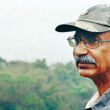


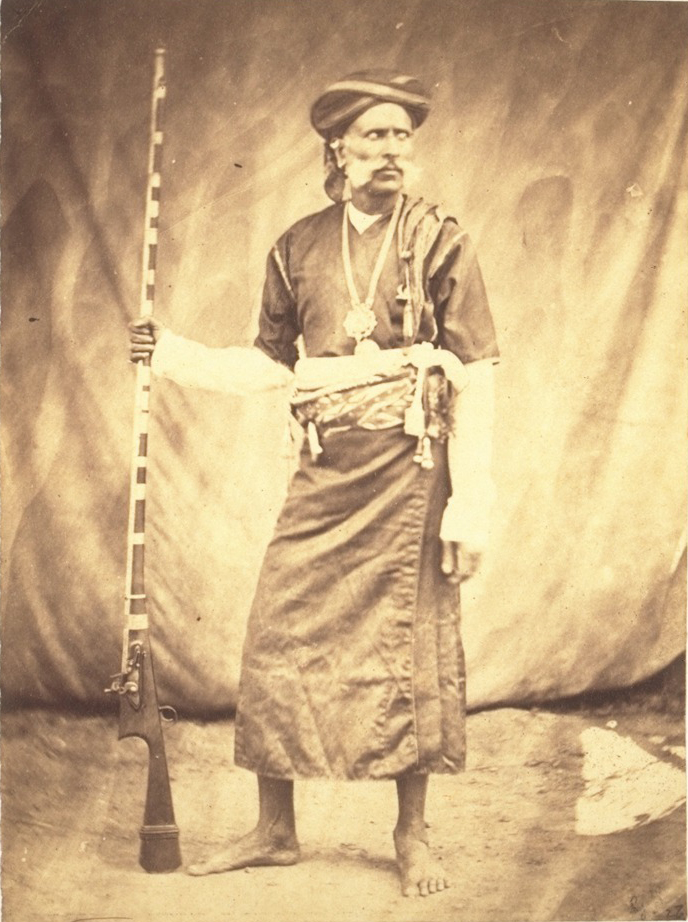
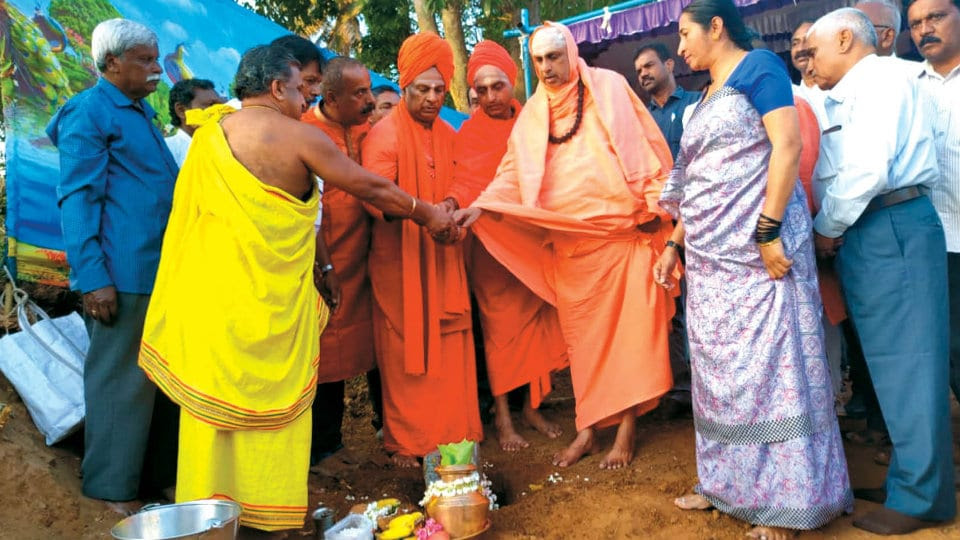
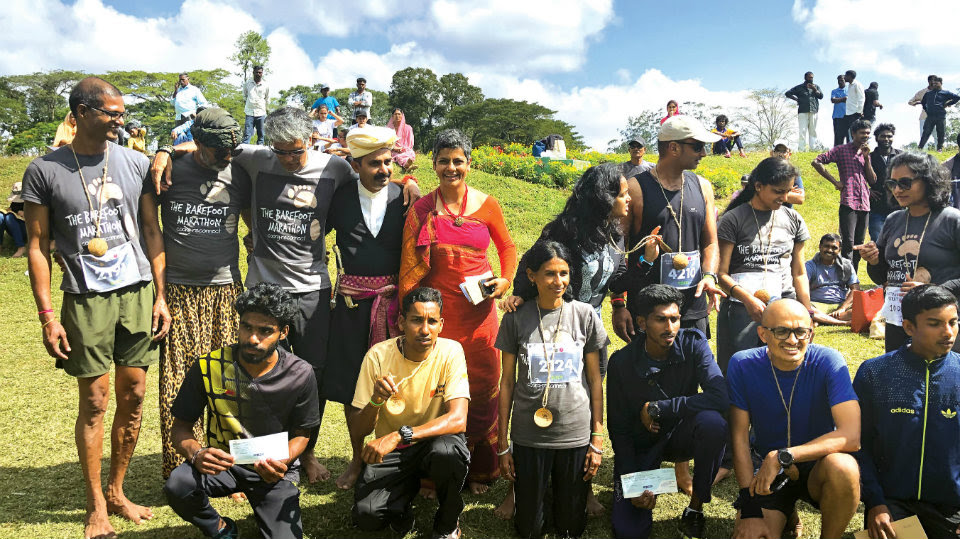
manual of coorg according 1834 attack western coloum on col Jackson NOT done by KODAVAS, this attack done by Tuluva rytos and Koots , this attack happened PURELY in TULU naad KUMBLE region
Hi Ganadakaty, Manual of Coorg(Page.339/340) clearly states that Col.Jackson’s battalion marched from Kumbla on 29th March 1834. No fighting took place in Kumbla. Kumbla was british territory. Only the regions of present day Sullia & Puttur were part of Coorg Kingdom in 1834. After marching 9 miles(14km), they encountered fighters, but those fighters were defeated easily. Col futher marched with his troops without encourtering any resistance to Uppanagala, then to Belluru, then to Ishwaramangala and finally to Bellare. In Manual of Coorg the place is mentioned as “Bollary”. It is at Bellare(Sullia), where he was met with serious check. Half… Read more »
What is this “Kumberbund” and “Kuttee” that european is referring to ?
I agree. Total if not great misinformation. Seems some of their own are shooting their mouth off.
“In 1861, the British administrators granted Kodavas an exemption from the Arms Act, for their support to the East India Company in administrative and military affairs.”
Plus some tiger shooting stuff.
Scroll – https://scroll.in/magazine/816012/in-the-hills-of-coorg-a-martial-tribe-celebrates-an-annual-festival-with-worship-of-guns
“No sense of their real history and origin of their traditions.”
Maybe because of these loud mouth, limelight seeking coorgis, other coorgis will have to dig their own grave and loose their cultural right.
Disclaimer: My grandmother was a Coorgie. I mean no disrespect or offence.
A lot of misinformation online about the importance of gun in Kodava culture and traditions.
I read at TOI that Coorgi were hunters and that’s why it was given to them as a “right”. And I was like, what nonsense ?. If that be the thing, then every hunting community in India should have the same privilege. Link – https://timesofindia.indiatimes.com/city/bengaluru/kodavas-rally-to-protect-185-year-old-gun-right/articleshow/70719115.cms
A bit of googling bought me to this article and now I understand why it is an integral part of Coorg culture.
No. Guns are NOT allowed in the weddings. There is no custom of carrying or using guns in Coorg(Kodava) weddings.
Do Coorgis use guns in their weddings ?